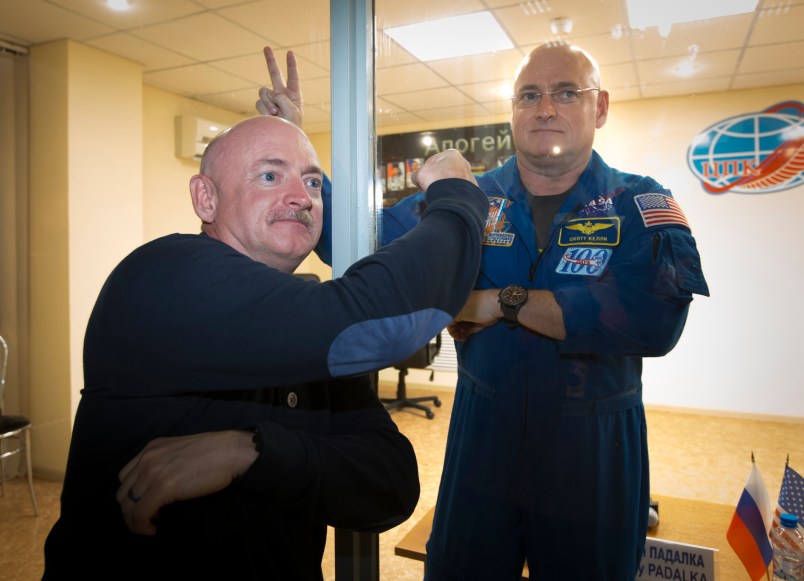BAIKONUR, Kazakhstan (AP) — American astronaut Scott Kelly and his Russian counterpart Mikhail Kornienko blasted off early Saturday on a mission to spend an entire year away from the Earth.
The trip is NASA’s first attempt at a one-year spaceflight, anticipating Mars expeditions that would last two to three years.
Their Soyuz space capsule set off from Russia’s manned space launch facility on the steppes of Kazakhstan at 1:42 a.m. (1942 GMT Friday; 4:42 p.m. EDT Friday) and was to dock with the International Space Station about six hours later after making four orbits of the planet.
Cosmonaut Gennady Padalka of Russia was also aboard their Soyuz capsule. He is scheduled for the standard six-month tour of duty aboard the space station.
Kelly’s identical twin Mark, a retired astronaut, agreed to take part in many of the same medical experiments as his orbiting sibling to help scientists see how a body in space compares with its genetic double on Earth.
Kelly and Kornienko will remain on board until next March. During that time, they will undergo extensive medical experiments, and prepare the station for the anticipated 2017 arrival of new U.S. commercial crew capsules. That means a series of spacewalks for the 51-year-old Kelly.
They also will oversee the comings and goings of numerous cargo ships, as well as other Russian-launched space crews.
Doctors are eager to learn what happens to Kelly and Kornienko once they surpass the usual six-month stay for space station residents.
Bones and muscles weaken in weightlessness, as does the immune system. Body fluids also shift into the head when gravity is absent, putting pressure on the brain and the eyes, impairing vision for some astronauts in space.
The yearlong stint will allow doctors to assess whether such conditions are aggravated by a long spell in space or whether they reach a point of stasis or even taper off.
NASA has never flown anyone longer than seven consecutive months. The Russians hold the world record of 14 months, set by a physician-cosmonaut aboard the former Mir space station in 1994-95. Several other Russians spent between eight and 12 months at Mir. All but one of those long-timers are still alive.
A year in space will carry not only physical challenges, but emotional ones as well.
A day before the launch, Kornienko said he would long for the sights of nature and said even on his mission in 2010, which was half as long, he had asked to be sent a calendar with photos of rivers and woods.
Kelly said he thought one of the biggest challenges would be to pace himself mentally so that he could remain energetic during the year aboard the laboratory.
But he joked that he wouldn’t miss his sibling.
“I’ve gone longer without seeing him, and it was great,” he said.
___
Heintz reported from Moscow.
Copyright 2015 The Associated Press. All rights reserved. This material may not be published, broadcast, rewritten or redistributed.







Low Earth Orbital Trek: The Voyage to Sun City